I agree. For me the screen size was the main reason to go for the 16" pro. Being in my 50's, it is hard, but I must admit the smaller screens just don't work. I'll just keep using it longer again, making the price a little better to cope with. My previous machine was a mid-2014 MBP 15" with full specs. Battery was dying (lasted only 30 minutes on a full charge) and all the number keys failed. Apart from those problems, the machine was doing just fine.With regard to the analysis between the two laptops that Hartley described in this article. I can't help, but think, that things will be more interesting when Apple releases the 15 inch Macbook Air.
Got a tip for us?
Let us know
Become a MacRumors Supporter for $50/year with no ads, ability to filter front page stories, and private forums.
MacBook Air vs. MacBook Pro Buyer's Guide: 30+ Differences Compared
- Thread starter MacRumors
- Start date
- Sort by reaction score
You are using an out of date browser. It may not display this or other websites correctly.
You should upgrade or use an alternative browser.
You should upgrade or use an alternative browser.
Not a lot of love for the 13" model here. Yes, the Touch Bar can have its issues with flickering over time (I want to say mine developed the issue, which shows up when the computer is in standby, because I clean my keyboard with Isopropyl too often and some of that likely got where it shouldn't have), but it has a better cooling mechanism than the newer Pro and NO NOTCH.
If Apple discontinues the 13" without the notch, I'll be at the Apple Store the next day to buy another one. It may look and feel a little older by today's standards, but I like my Pro (purchased two years ago, one of the last Intel models) and would love to get another one with Apple Silicon inside. I don't need/care about the SD card reader, but am really glad I got my Pro with four USB ports.
If Apple discontinues the 13" without the notch, I'll be at the Apple Store the next day to buy another one. It may look and feel a little older by today's standards, but I like my Pro (purchased two years ago, one of the last Intel models) and would love to get another one with Apple Silicon inside. I don't need/care about the SD card reader, but am really glad I got my Pro with four USB ports.
Darth Tulhu
macrumors 68020
My opinion is: unless you truly NEED the extra power or two-monitor connectivity, the MBA is the KING.
I have both a 12.9" iPad Pro and the M2 MBA and I don't miss ProMotion at all (as nice as it is). The MBA screen is plenty bright and nice.
But the MBA is so thin and light, and its shape actually makes it FEEL thinner and lighter than it is.
I often carry it instead of my iPad... The iPad not having a built in kickstand means I have to add one (the 'ole trifold folio), but the weight difference of my 12.9" with the folio and the MBA again feels negligible.
The MBA is banging. I'll be keeping this one for ten years easy (until I drool for something else) .
.
I have both a 12.9" iPad Pro and the M2 MBA and I don't miss ProMotion at all (as nice as it is). The MBA screen is plenty bright and nice.
But the MBA is so thin and light, and its shape actually makes it FEEL thinner and lighter than it is.
I often carry it instead of my iPad... The iPad not having a built in kickstand means I have to add one (the 'ole trifold folio), but the weight difference of my 12.9" with the folio and the MBA again feels negligible.
The MBA is banging. I'll be keeping this one for ten years easy (until I drool for something else)
I’m having the same 2014 MacBook Pro. Are you happy with the 16? Thinking to buy that or wait for the MacBook air 15.I agree. For me the screen size was the main reason to go for the 16" pro. Being in my 50's, it is hard, but I must admit the smaller screens just don't work. I'll just keep using it longer again, making the price a little better to cope with. My previous machine was a mid-2014 MBP 15" with full specs. Battery was dying (lasted only 30 minutes on a full charge) and all the number keys failed. Apart from those problems, the machine was doing just fine.
My opinion is: unless you truly NEED the extra power or two-monitor connectivity, the MBA is the KING.
I have both a 12.9" iPad Pro and the M2 MBA and I don't miss ProMotion at all (as nice as it is). The MBA screen is plenty bright and nice.
But the MBA is so thin and light, and its shape actually makes it FEEL thinner and lighter than it is.
I often carry it instead of my iPad... The iPad not having a built in kickstand means I have to add one (the 'ole trifold folio), but the weight difference of my 12.9" with the folio and the MBA again feels negligible.
The MBA is banging. I'll be keeping this one for ten years easy (until I drool for something else).
I have a 12.9 iPad and in the market for a new computer,
I am worried about the iPad and the Air being redundant. Having both, do you think so?
It went badly? I use 3 monitors an my M1 MBA and 4 extra monitors on my M1 Max MBP using a startech dock with the displaylink adapters connected and it’s been perfect.There should not be a work around just to simply connect 2 external monitors. And from past experience, DisplayLink was a horrible experience when we set it up for a user in the office. Apple failed on this.
The reality is Apple won’t allow extra monitors without modding or upgrading - I think it’s ridiculous too but my method was my only option that got me any results.
These comparison articles are great, but the side-by-side bullet points never line up making it difficult to quickly scan each item.
For MacRumors editors, this is what I’m talking about with the bullet points.
Surely this deserves a table or some other evenly distributed CSS presentation?
View attachment 2151095
—
At any rate, what about the keyboards? Are they the same between the air and the Pros?
This comes up nearly every time and they never address it.
I just got the Air (8/10, 16GB, 1TB) and I also have the 12.9 M1 iPad Pro (1TB). In the week since I've had the Air, I've hardly used the iPad. Granted, I am still in the honeymoon phase of ownership with the new machine, but I honestly don't see going back to the tablet too much. I bought the iPad Pro when the hype for the machine was at its all-time high-- and I bought it with the promise that the device could be a replacement for my (then) 2013 13" MBP. iPadOS has not panned out by any stretch as a productivity platform. It is largely my fault-- I wanted it to be a Mac, and it isn't. I fell for the iPad's potential. It's a great device for media consumption and light computing (word processing and email), but not much else. As I look at it sitting on my table, it occurs to me that it makes me angry. And don't get me started on the devices implementation of centerstage in landscape. You know what centerstage means when you are on a Zoom/Teams meeting? It means you participate in the meeting with damn camera OFF! GRRRRR!!!!!I have a 12.9 iPad and in the market for a new computer,
I am worried about the iPad and the Air being redundant. Having both, do you think so?
I really need to sell the thing.
Last edited:
The display controller is not really the GPU though obviously they are related. Adding additional display controllers will mean more transistors or something else needs to be removed. Personally, I'd rather have the option of another external display than say the ProRes codec but that's not what Apple went for. I don't currently have a second external display but I could at least see myself using one at some point (currently one 24" 4K). I will never use the ProRes codec.Yes but always keep in mind that workaround is because Apple decided to cripple abilities the GPU is perfectly capable of. And it's annoying. It doesn't perform as well as the SoC is capable of and while using it you give up the ability to play protected video streams because DisplayLink looks like screen recording. Hell, you used to have to also give up 'Unlock with Apple Watch' for the same reason.
The external display limit is an artificial limit Apple placed on the low end devices to push you to more expensive ones.
You might want to use cleaning solutions designed for eyeglasses. They do have isopropyl alcohol but the concentration is not as strong and you are usually only using a damp wipe not enough to flow into the innards.I agree. For me the screen size was the main reason to go for the 16" pro. Being in my 50's, it is hard, but I must admit the smaller screens just don't work. I'll just keep using it longer again, making the price a little better to cope with. My previous machine was a mid-2014 MBP 15" with full specs. Battery was dying (lasted only 30 minutes on a full charge) and all the number keys failed. Apart from those problems, the machine was doing just fine.
In past I've always bought the Pro because I would be doing processor intensive takes. So getting the new MacBook Air M2 first time to go with a basic MacBook and I love it. I did bump up the RAM and drive so no swapping and the faster drive. The performance and battery life is great and because of it size I find I use it more than my old iPad.
Apple recently announced a major update for its high-end MacBook Pro models, adding the M2 Pro and M2 Max chips, better battery life, Wi‑Fi 6E, Bluetooth 5.3, and an HDMI 2.1 port. Last year, Apple updated the MacBook Air with a complete redesign and the M2 chip, so how do the machines compare?
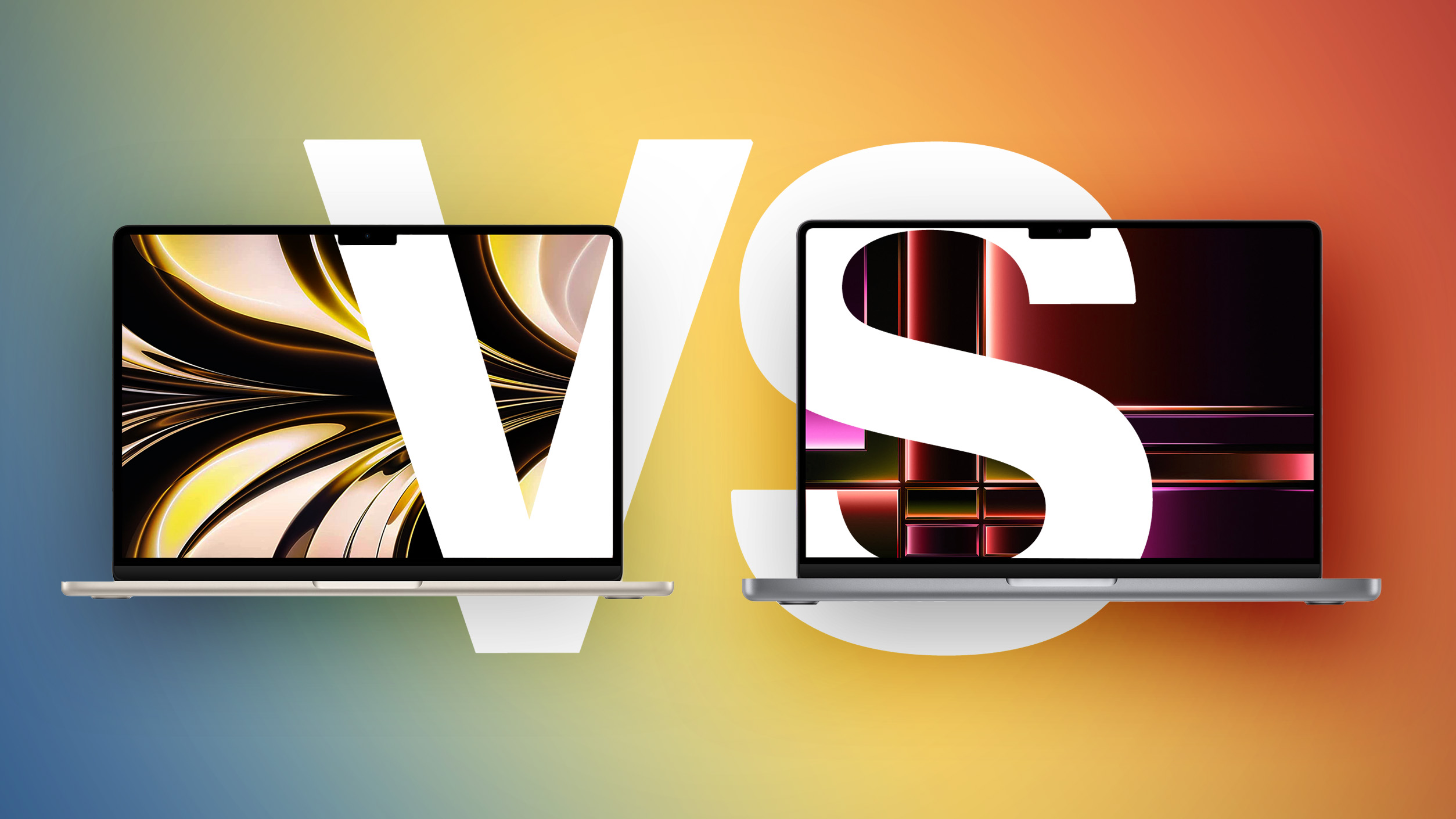
Despite now being similar in appearance, the MacBook Air and the MacBook Pro are very different machines, so should you consider purchasing the MacBook Air, which starts at $1,199, to save money, or do you need one of the higher-end 14- or 16-inch MacBook Pro models, which cost at least $800 more? Our guide helps to answer the question of how to decide which of these two popular Apple silicon machines is best for you.
This guide focuses on the high-end, 14- and 16-inch MacBook Pro models with the M2 Pro and M2 Max chips rather than the 13-inch MacBook Pro with the M2 chip. See our other buyer's guide to understand the differences between the 13-inch MacBook Pro and the 14- and 16-inch models.
Key Differences Overview
MacBook Air
- 13.6-inch display
- LCD Liquid Retina display display
- 500 nits brightness
- Apple M2 chip
- 8-core CPU with with four performance cores and four efficiency cores
- 10-core GPU
- 100GB/s memory bandwidth
- 8GB, 16GB, or 24GB of unified memory
- 256GB, 512GB, 1TB, or 2TB of storage
- Passive cooling
- Wi-Fi 6
- Bluetooth 5.0
- Two Thunderbolt / USB 4 ports
- Four-speaker sound system
- Three-mic array with directional beamforming
- Integrated 52.6-watt-hour lithium-polymer battery
- Up to 18 hours battery life
- 30W, 35W, or 67W USB-C Power Adapter
MacBook Pro
- 14.2-inch or 16.2-inch display
- Mini-LED Liquid Retina XDR display with ProMotion
- Up to 1,000 nits sustained (full-screen) brightness and 1,600 nits peak brightness
- Apple M2 Pro chip or Apple M2 Max chip
- Up to 12-core CPU with eight performance cores and four efficiency cores
- Up to 19-core GPU with M2 Pro and up to 38-core GPU with M2 Max
- Up to 400GB/s memory bandwidth
- 16GB or 32GB unified memory with M2 Pro and 32GB, 64GB, or 96GB unified memory with M2 Max
- 512GB, 1TB, 2TB, 4TB, or 8TB of storage
- Active cooling
- Wi-Fi 6E
- Bluetooth 5.3
- Three Thunderbolt 4 (USB-C) ports
- HDMI 2.1 port with support for multichannel audio output
- SDXC card slot
- High-fidelity six-speaker sound system with force-cancelling woofers
- Studio-quality three-mic array with high signal-to-noise ratio and directional beamforming
- Integrated 70-watt-hour or 100-watt-hour lithium-polymer battery
- Up to 18 or 22 hours battery life
- 67W, 96W, or 140W USB-C Power Adapter
Design
Both the MacBook Air and MacBook Pro share the same basic design with a flat top and rounded edges on the bottom, but they do have several minor details that differ. For example, while both MacBooks have displays with a "notch" at the top to facilitate the built-in webcam, the MacBook Pro's bezels are noticeably slimmer. The keyboard area of the high-end MacBook Pro is also all-black.
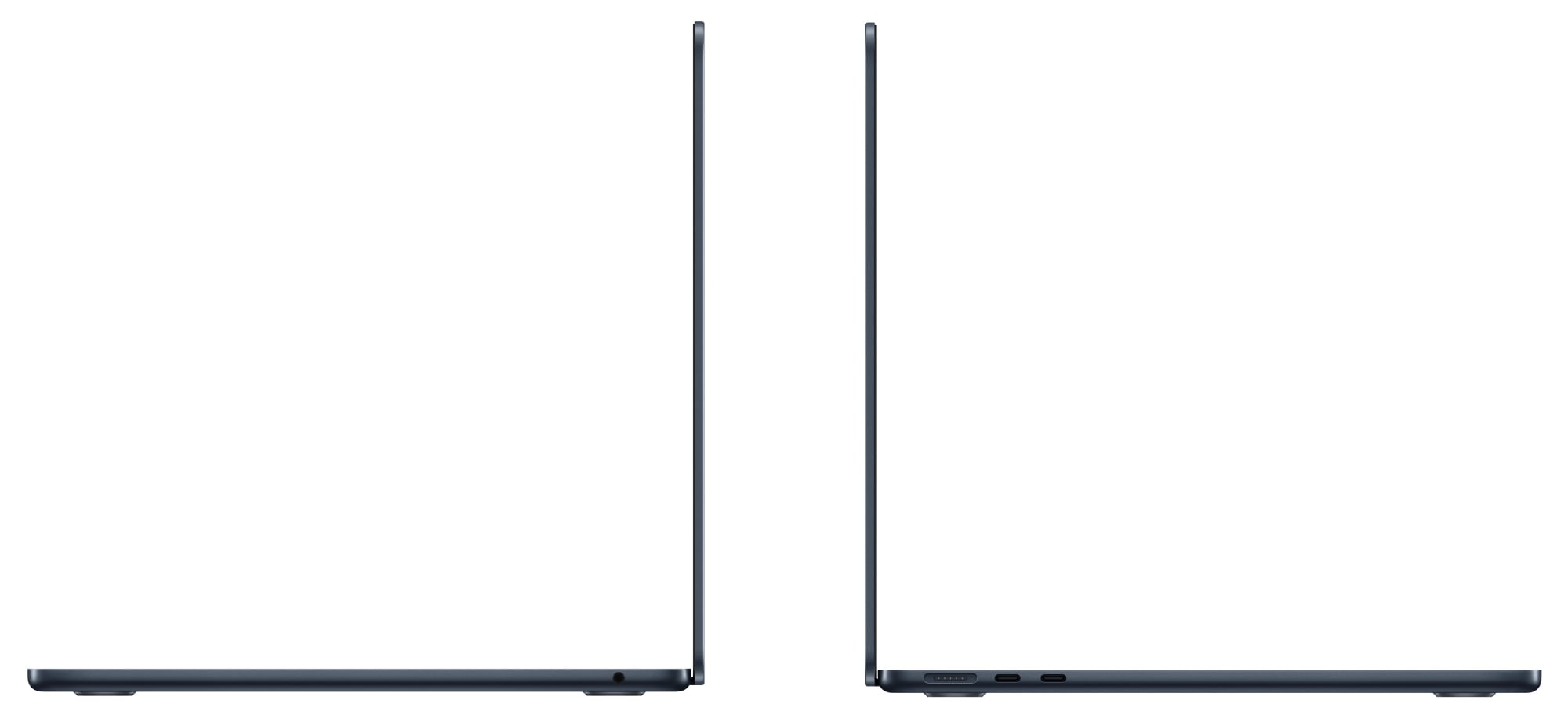
The MacBook Air and MacBook Pro are available in Silver and Space Gray, but the MacBook Air is also offered in Starlight and Midnight color options, so if you are looking for a particular aesthetic with one of these finishes, you will need to get the MacBook Air.
MacBook Air
- Height: 0.44 inches (1.13 cm)
- Width: 11.97 inches (30.41 cm)
- Depth: 8.46 inches (21.5 cm)
- Weight: 2.7 pounds (1.24 kg)
MacBook Pro
- Height: 0.61 inches (1.55 cm)/0.66 inch (1.68 cm)
- Width: 12.31 inches (31.26 cm)/14.01 inches (35.57 cm)
- Depth: 8.71 inches (22.12 cm)/9.77 inches (24.81 cm)
- Weight: 3.5 to 4.8 pounds (1.60 to 2.16 kg)
Dimensions are also a key area of difference between the MacBook Air and MacBook Pro. The 16-inch MacBook Pro is considerably larger and heavier than the MacBook Air, but it is important to not understate the difference between the 14-inch MacBook Pro and the MacBook Air. While the 14-inch MacBook Pro offers a larger display than the MacBook Air, its marginally larger footprint, added thickness, and an additional 0.8 pounds of weight do make for a noticeably less portable machine if you prefer to travel light.
Even so, the 14-inch MacBook Pro offers a very good balance of portability and performance, so if you need its added capabilities, its size and weight should not hold you back.
Ports and Connectivity
The selection of ports is an area of major difference between the two machines. The MacBook Air features just two Thunderbolt 4 ports. The 14-inch and 16-inch MacBook Pro models, on the other hand, have three Thunderbolt 4 ports, an HDMI 2.1 port, and an SDXC card slot. Both machines feature a 3.5mm headphone jack with support for high-impedance headphones, but the 13-inch MacBook Air can support only one external display, while the high-end MacBook Pro model can support up to four displays in total with the M2 Max chip.
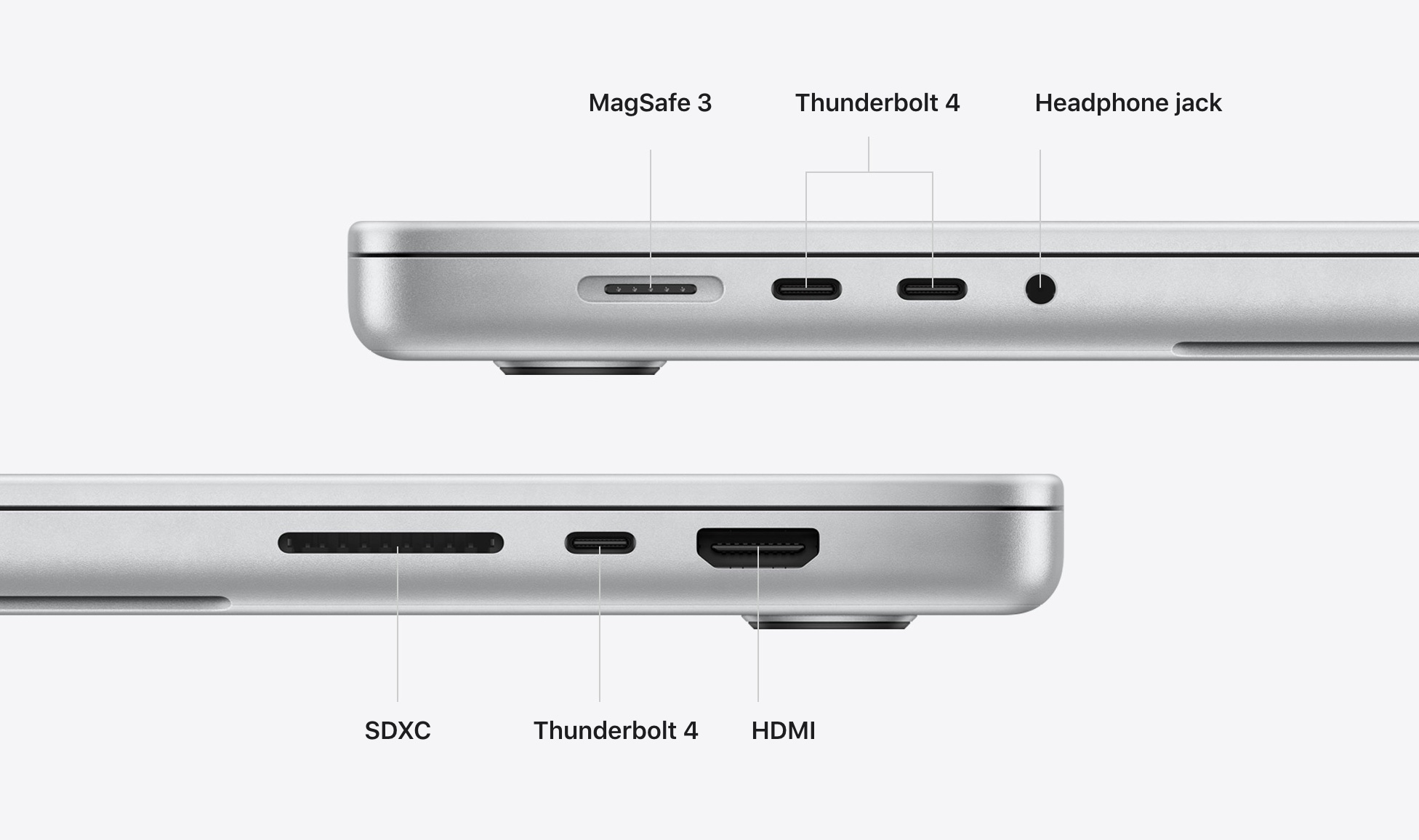
All in all, the MacBook Pro is much more versatile in terms of connectivity, even possessing newer Bluetooth and Wi-Fi specifications, offering useful features for professionals who use SDXC cards from digital cameras, multiple external displays, or even simply more USB peripherals.
Display Size
The MacBook Air's display is 13.6 inches in size, which is a little smaller than the 14.2-inch MacBook Pro, and markedly smaller than the 16.2-inch MacBook Pro. 13.6 inches is still bigger than the largest iPad Pro model, which comes in at 12.9 inches, and even all of the previous MacBook Air and smaller MacBook Pro models, meaning that it should be adequate for most users. The 14.2-inch MacBook Pro simply offers a little bit more screen real estate to those who need high-end capabilities.
The 16.2-inch display will be a better replacement for a desktop machine and provide much more screen space to arrange multiple windows and use professional applications that benefit from additional display area.
Display Technology
The display technologies of both machines are significantly different. Like most MacBooks in recent years, the MacBook Air has an LCD panel, but owing to its slim bezels and rounded corners, Apple calls it a Liquid Retina display. The 14- and 16-inch models feature Apple's more advanced mini-LED Liquid Retina XDR technology for deeper blacks, better dynamic range, and improved color accuracy.

The XDR display can get much brighter, reaching as high as 1,600 nits of brightness at its peak when showing HDR content. The 14- and 16-inch MacBook Pro models also have ProMotion displays, allowing them to vary their refresh rate up to 120Hz. The MacBook Air does not have a display with a variable refresh rate.
It will be worth getting the high-end MacBook Pro models for viewing and editing HDR content, as well as watching high-framerate video such as sports. The display of the MacBook Air is sufficient for most users and some may not even notice a drastic difference. The MacBook Pro's deeper blacks and smoother on-screen motion simply offer a slightly better experience.
Chips
The MacBook Air contains the M2 chip, while MacBook Pro customers can choose between the M2 Pro and M2 Max chips. The M2 Pro and M2 Max are scaled-up versions of the M2 chip that offer additional CPU and GPU cores. See the M2, M2 Pro, and M2 Max's Geekbench 5 scores below:
Single-Core Scores
Metal GPU Scores
- M2: ~2,000
- M2 Pro: ~2,000
- M2 Max: ~2,000
- M2: ~30,500
- M2 Pro: ~52,700
- M2 Max: ~87,000
Multi-Core Scores
- M2: ~9,000
- M2 Pro: ~15,000
- M2 Max: ~15,000
The M2 Pro and M2 Max provide CPUs with up to four additional cores and GPUs with up to 28 additional cores. The M2 chip in the MacBook Air is just as powerful as the M2 Pro and M2 Max in single-core tasks, but the M2 Pro and M2 Max are considerably better in multi-core and graphics tasks.
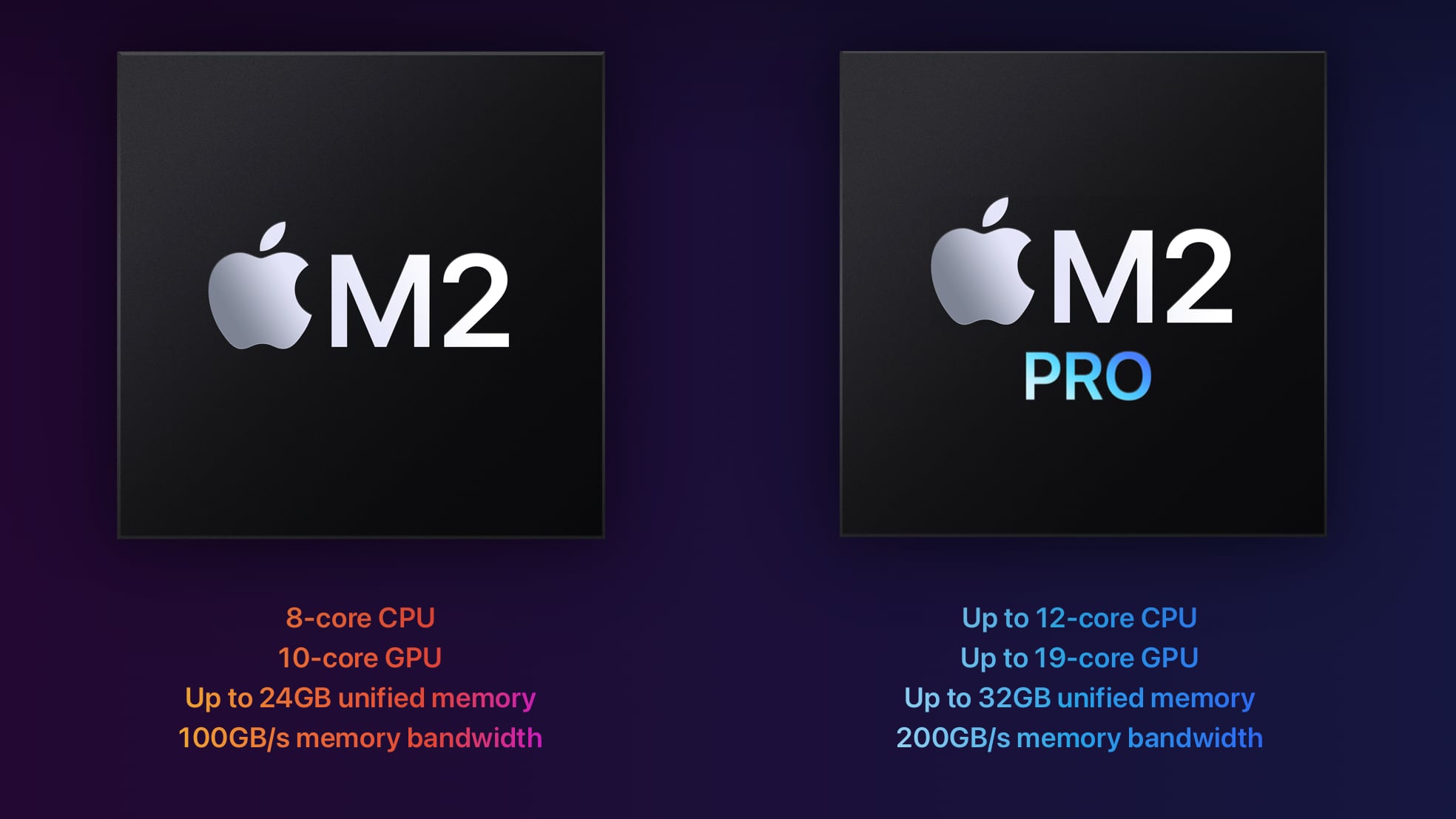
With significantly more transistors, performance CPU cores, and GPU cores, the M2 Pro and M2 Max are powerful chips designed for professionals with demanding workflows. The M2, on the other hand, is more of a consumer-oriented chip focused on delivering surprisingly impressive performance and excellent efficiency to keep temperatures down and prolong battery life.
It is also worth noting that the MacBook Air is passively cooled and contains no fan, which can slightly constrain peak performance compared to the MacBook Pro, since the high-end machines have large fans to actively cool the system and push the chips harder.
Memory and Storage
The MacBook Air can be configured with up to 24GB of unified memory and up to 2TB of storage, which should be more than enough for the vast majority of users. For those who need even more memory and storage, the MacBook Pro can be configured with 72GB more memory and 6TB more storage than the top-spec MacBook Air.
The M2 Pro and M2 Max chips in the MacBook Pro also provide 200GB/s and 400GB/s memory bandwidth respectively – an enormous increase over the 100GB/s memory bandwidth with the M2 chip in the MacBook Air.
Buyers should also be aware that the 256GB MacBook Air and 512GB MacBook Pro base models have up to 50 percent slower SSDs than configurations with more storage. This is because the base models only have a single SSD module inside, whereas models with larger amounts of storage have two SSD chips, significantly increasing the overall speed of the machine's storage.
Speakers and Microphones
The MacBook Air has a four-speaker sound system that is surprisingly full and balanced for such a small, slim device. The MacBook Pro takes things to the next level with a high-fidelity six-speaker sound system with force-cancelling woofers for dramatically bigger and deeper audio – something that may be invaluable to users who work in professional audio production or simply listen to a lot of music out-loud.
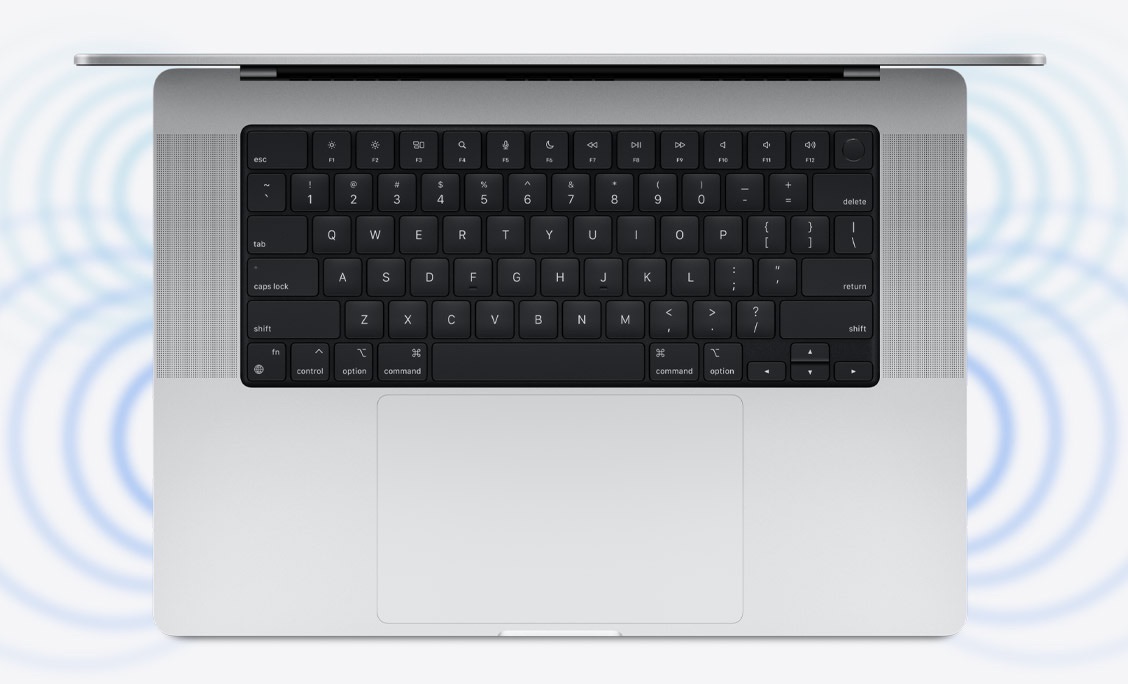
The MacBook Air has a three-mic array with directional beamforming that is perfect for activities like video calls and voice notes. The MacBook Pro has what Apple calls a "studio-quality" three-mic array with high signal-to-noise ratio and directional beamforming. While they are not as good as a dedicated microphone, the MacBook Pro's microphones are impressive and, at a push, are suitable for production purposes like podcasting.
Battery Life
The MacBook Air has an 18-hour battery life, offering the same battery life as the 14-inch MacBook Pro and four hours less than the 16-inch MacBook Pro.
Other MacBook Options
If you are looking for a more affordable Apple silicon MacBook, there is the M1 MacBook Air, which sports a 13.3-inch Retina display, Touch ID, two Thunderbolt ports, and more, for prices starting at $999. For users on a strict budget, the M1 MacBook Air is still a good option.
For just $100 more than the M2 MacBook Air, there is the M2 MacBook Pro – an entry-level MacBook Pro model that has a 13.3-inch display and uses the same design that dominated all of Apple's MacBook Pro models from 2016 to 2021. It has the same chip as the MacBook Air but can push it slightly harder due to having a fan for active cooling, and offers a brighter display, the Touch Bar, better microphone and speaker quality, and two extra hours of battery life. If you cannot afford the 14-inch MacBook Pro's $1,999 price tag, but you think you will need slightly more than what the M2 MacBook Air has to offer, the 13-inch MacBook Air offers a good middle-ground option for some.
Final Thoughts
Overall, the MacBook Air is the best option for most users, offering an excellent balance of features and performance in a highly portable design. The MacBook Air's $1,199 price tag is affordable compared to the MacBook Pro, and with an education discount or an offer from our Apple Deals Roundup, it is possible to get that price down by at least $100. The additional $800 to get the MacBook Pro likely is not worth it for most users, and on the contrary, many will prefer the slimmer, lighter design of the MacBook Air and perhaps even its additional color options.
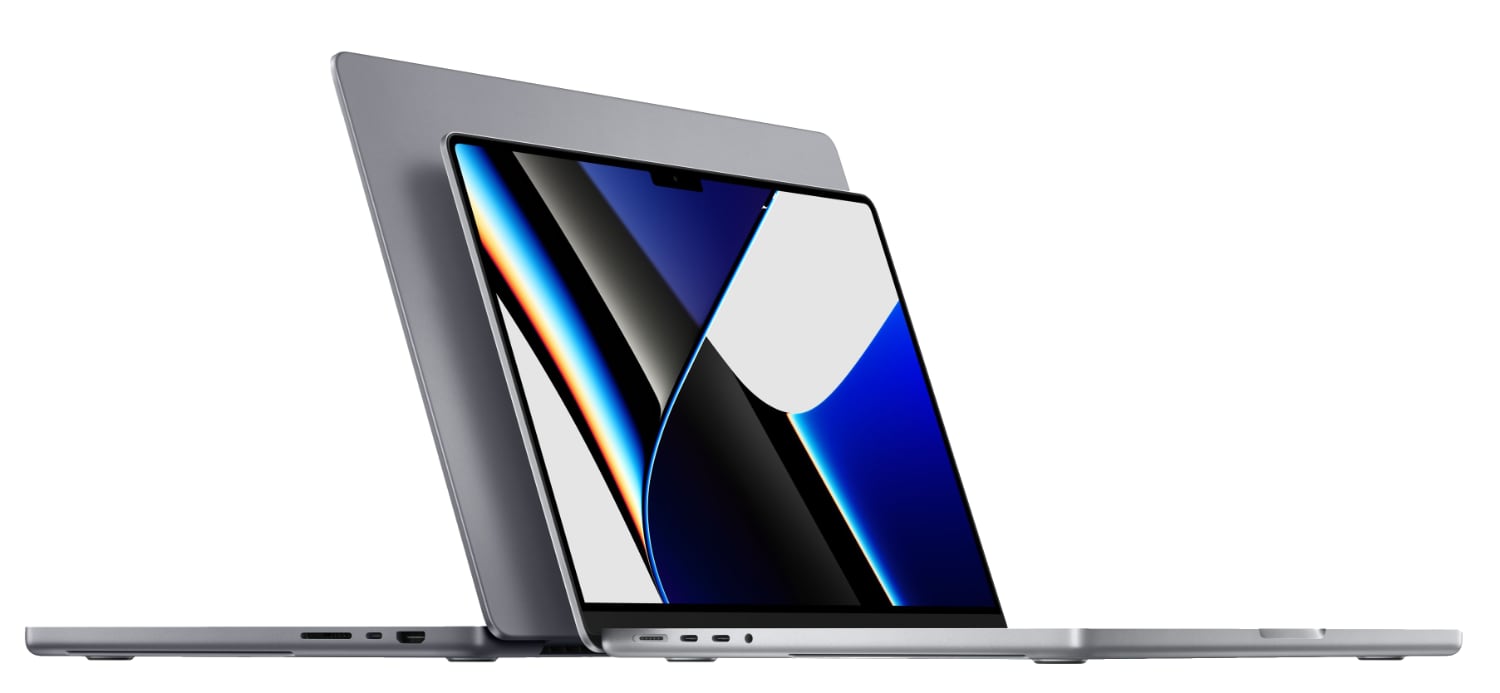
Professionals who require larger and more accurate displays, additional ports, more memory and storage, and a very high level of performance should look to the 14- and 16-inch MacBook Pro, and the $1,999 and $2,499 price points of these machines reflects this. These high-end MacBook Pros are not targeted at everyday consumers, being clearly tailored to creatives and professionals who rely heavily on the capabilities of their machines. As such, the MacBook Pro should only be a go-to option if you are a power-user or professional who can make use of its advanced features.
Alternatively, if you are a tech enthusiast who can afford to pay a lot more to get the MacBook Pro, aspects like its larger Liquid Retina XDR display with ProMotion and six-speaker sound system can be enjoyed by almost any user. If you simply want the best possible performance, connectivity, display technology, and speakers, the high-end MacBook Pro is the best option. The 16-inch MacBook Pro, in particular, is also potentially a good desktop replacement machine due to its large display.
If you configure the MacBook Air with its 10-core GPU option, 16GB of memory, and 512GB of storage to build a configuration that is closer to the 14-inch MacBook Pro, it costs $1,699 – just $300 less than the MacBook Pro. At this point, it may be worth paying the extra cash to get the 14-inch MacBook Pro, since that machine's performance, larger mini-LED display with ProMotion, additional ports and memory bandwidth, and better speakers and microphone deliver a big upgrade.
Article Link: MacBook Air vs. MacBook Pro Buyer's Guide
Now for me the one con is my eyes are getting old so the screen is a bit small for me. So I am considering moving up to the Macbook Pro 16" or wait for the Macbook Air 15". But that me and my old eyes. The MacBook Air M2 lotta bang for the buck.
Thanks, appreciate the long reply. On my side, I am very happy with the iPad, I think it's a great light computing device so I want to make sure I don't pair it with another light computing device. I was waiting for the large iMac but now considering laptops given it's not coming.I just got the Air (8/10, 16GB, 1TB) and I also have the 12.9 M1 iPad Pro (1TB). In the week since I've had the Air, I've hardly used the iPad. Granted, I am still in the honeymoon phase of ownership with the new machine, but I honestly don't see going back to the tablet too much. I bought the iPad Pro when the hype for the machine was at its all-time high-- and I bought it with the promise that the device could be a replacement for my (then) 2013 13" MBP. iPadOS has not panned out by any stretch as a productivity platform. It is largely my fault-- I wanted it to be a Mac, and it isn't. I fell for the iPad's potential. It's a great device for media consumption and light computing (word processing and email), but not much else. As I look at it sitting on my table, it occurs to me that it makes me angry. And don't get me started on the devices implementation of centerstage in landscape. You know what centerstage means when you are on a Zoom/Teams meeting? It means you participate in the meeting with damn camera OFF! GRRRRR!!!!!
I really need to sell the thing.
The article states that the 14 inch MacBook Pro is 1.2 Pounds heavier that the MacBook Air. But 3.5 - 2.7 <> 1.2 (=0.8).
Yeah, it's a rather disappointing article. Also, no details on the webcam.
The 2020 Intel MacBook Air could drive two 6k external displays.
That's not what the spec sheet says:
Introduced March 2020, discontinued November 2020
MacBookAir9,1 Model Number A2179
One external 6K display with 6016 by 3384 resolution at 60 Hz, one external 5K display with 5120 by 2880 resolution at 60 Hz, up to two external 4K displays with 4096 by 2304 resolution at up to 60 Hz
Display Modes Dual display extended, video mirroring, AirPlay Mirroring, and Sidecar
Sorry, I meant two 4K external displays.That's not what the spec sheet says
Oh, it's coming. It has to be. If you're cool with having a MBP as a primary machine, then go for it. I think the new ones are absolutely stellar. My take on the matter might be unusual: for my main computer I need a big monitor (bigger than that obtainable in any laptop), I like TONS of storage as I am a horrible media hoarder (and I bought into Steve Jobs "digital hub concept hook line and sinker). But as important as that is, I like having a centralized work environment that goes with having a desktop machine. I wonder if that's unusual? One other thing: when the battery in your laptop starts to go south— and they always do, eventually— there is always anxiety. Better to have that issue with a satellite device rather than a primary. If you are like-minded with any of that, then you might consider waiting for the iMac. It's gonna be awesome. How could it not be, given what we're seeing in the latest portables?I was waiting for the large iMac but now considering laptops given it's not coming.
Darth Tulhu
macrumors 68020
I just got the Air (8/10, 16GB, 1TB) and I also have the 12.9 M1 iPad Pro (1TB). In the week since I've had the Air, I've hardly used the iPad. Granted, I am still in the honeymoon phase of ownership with the new machine, but I honestly don't see going back to the tablet too much. I bought the iPad Pro when the hype for the machine was at its all-time high-- and I bought it with the promise that the device could be a replacement for my (then) 2013 13" MBP. iPadOS has not panned out by any stretch as a productivity platform. It is largely my fault-- I wanted it to be a Mac, and it isn't. I fell for the iPad's potential. It's a great device for media consumption and light computing (word processing and email), but not much else. As I look at it sitting on my table, it occurs to me that it makes me angry. And don't get me started on the devices implementation of centerstage in landscape. You know what centerstage means when you are on a Zoom/Teams meeting? It means you participate in the meeting with damn camera OFF! GRRRRR!!!!!
I really need to sell the thing.
I have a 12.9 iPad and in the market for a new computer,
I am worried about the iPad and the Air being redundant. Having both, do you think so?
The short answer to the above question is "No, they are not redundant. Not even close."
This is done by design; one device does not fully replace the other, even if there is some overlap.
Apple INTENDED the iPad to be an in-between device, and when used that way, it is a pleasure. You can ignore all the center-stage, keyboard-and-mouse/trackpad shenanigans Apple did to appease some folks with snake oil... if you crave that, get a Mac (also).
The iPad excels as a tablet, an interim device for when I don't want to carry a full laptop, or when away from my desktop, or when I need to do personal computing (sign/send documents, draw, quickly drop ideas into Garageband, check personal email/texts, etc.), or when I'm on the couch. Or simply when I want to do something the iPad way, because I prefer that particular task on the iPad. And of course, it's a killer secondary monitor for my MBA.
The MBA/iPad Pro combo is a powerful AND light setup that I can take pretty much anywhere and be HIGHLY productive.
All that said, I feel the iPad is a matter of taste; I LIKE the way the iPad works... how simple it is, and how similar it is to my iPhone. For me, it is VERY close to being a full Mac replacement, but it really isn't there yet.
My biggest gripes are that Web browsing on it is wonky(er than on a Mac), and accessing my iCloud files is easy enough, but manipulating any of them can be a pain the MBA removes immediately.
So really, the question is "Do you need a Mac or not?" I thought I didn't (for 6 months), but I do. Now I have both, and I'm happier than ever.
I think of it as having a motorcycle for solo commutes (iPhone), a sports sedan for fun and nights out on the town (iPad), and a nice hot hatch/small SUV for longer, more comfy drives and trips to the grocery or hardware store (MBA). Some people simply love their trucks, and use them for everything.
No one is wrong.
PS. Sorry for the long post. Got carried away in my enthusiasm for BOTH my 12.9 and M2 MBA.
What a great review, especially the closing analogy! Just ordered the M2 Air for my wife, who really likes her iPad Pro. I can work through the iOS file peculiarities but she, not so much  And being able to use her iPad as a screen extender is a plus! Thanks!
And being able to use her iPad as a screen extender is a plus! Thanks!
Very happy. Although it is quite heavy, screen, performance and usability is great! Such an improvement. And the sound coming from those tiny speakers sounds also wonderful, as if they are much biggerI’m having the same 2014 MacBook Pro. Are you happy with the 16? Thinking to buy that or wait for the MacBook air 15.
I have never, ever needed to clean the keys. Never touched them with cleaning solution or whatsoever, so I don't know what exactly you are pointing to?You might want to use cleaning solutions designed for eyeglasses. They do have isopropyl alcohol but the concentration is not as strong and you are usually only using a damp wipe not enough to flow into the innards.
I thought I was replying to someone who was asking about using isopropyl alcohol to clear the screen and keyboard. I must have replied to the wrong post. Sorry for the confusion.I have never, ever needed to clean the keys. Never touched them with cleaning solution or whatsoever, so I don't know what exactly you are pointing to?
To those talking about cleaning keys--it's probably my comment you were looking to reply to!
I don't use isopropyl on screens and use a cleaner similar to eyeglass cleaner for it (it's specifically for computer screens). I do, however, disinfect keyboards often, especially if I've been using the laptop in public places. I do the same with my phone routinely.
Chalk that one up to being raised by a nurse and being an early adopter of hand sanitizer, long before it became cool
I don't use isopropyl on screens and use a cleaner similar to eyeglass cleaner for it (it's specifically for computer screens). I do, however, disinfect keyboards often, especially if I've been using the laptop in public places. I do the same with my phone routinely.
Chalk that one up to being raised by a nurse and being an early adopter of hand sanitizer, long before it became cool
I tried it several times in the Apple Store and yes it’s amazing. I’m waiting to see how the MacBook Air 15 is turning out, before I take a decision. I will travel around 8-10 times a year on holidays with it, so the 16 might be a little too heavy.Very happy. Although it is quite heavy, screen, performance and usability is great! Such an improvement. And the sound coming from those tiny speakers sounds also wonderful, as if they are much bigger
The comments from January and February are confusing.
You guys should have just created an entirely new post.
You guys should have just created an entirely new post.
Register on MacRumors! This sidebar will go away, and you'll see fewer ads.


